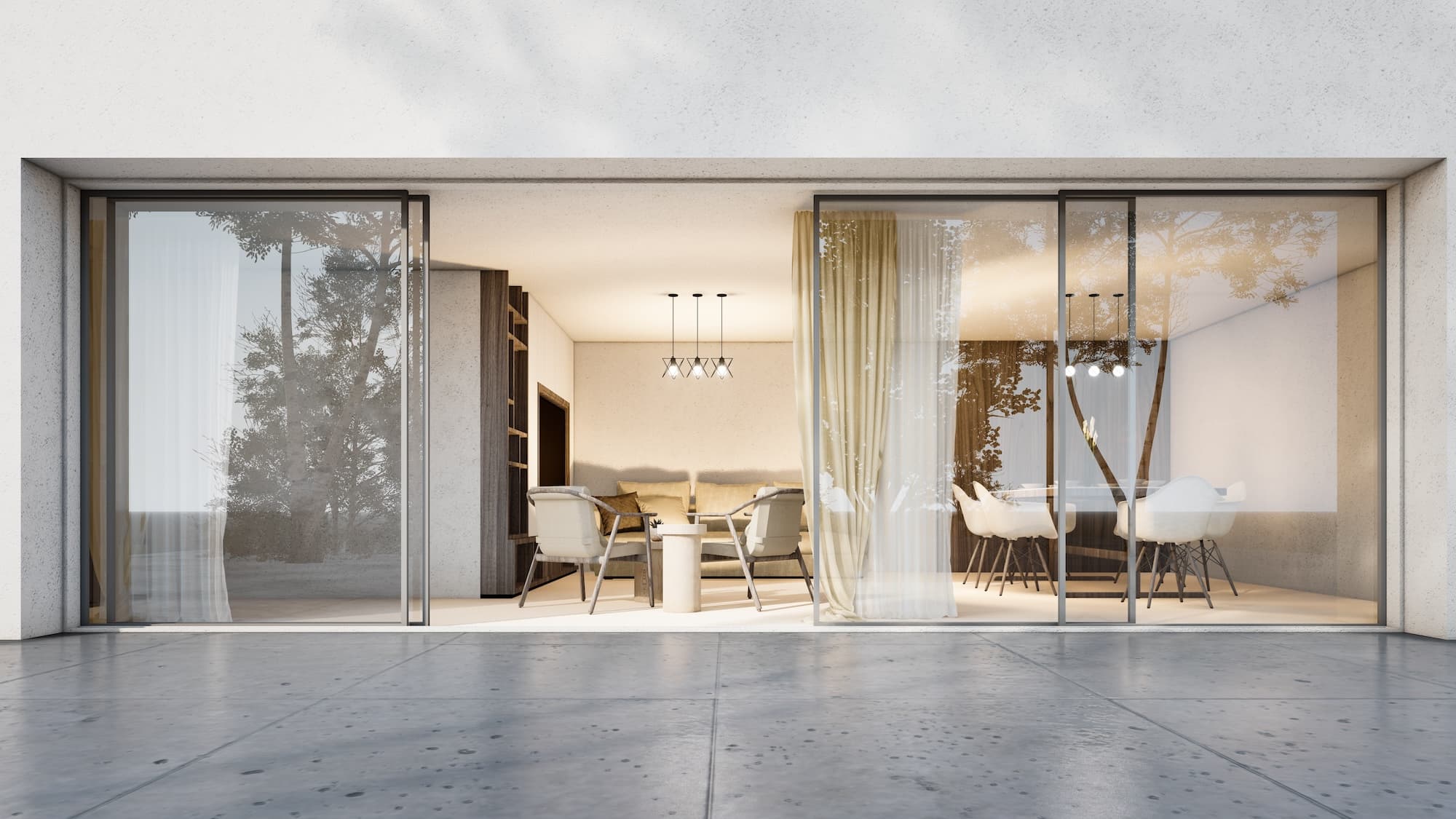
What windows should be used to make a room appear spacious?
Currently, we are seeing more and more developers putting up terraced houses, semi-detached houses or detached houses, but with a fairly small volume. It is therefore less common to see a building over 200 m². This is of course important in terms of the cost of construction and the subsequent operation of the building.
What is more, counting with every centimetre, we have to be aware that there will often be situations where we will have to arrange the space additionally with such limitations as roof slants. Therefore, windows may turn out to be the simplest and at the same time the best way to brighten up rooms and optically enlarge them.
The current technological and personalisation possibilities of windows make it possible to make them a key point of interior design, which will have a huge impact on the final décor. In this way, even small rooms can easily take on their due character and optically enlarge small houses, offsetting the problems of many builders.

Small rooms and large windows
When deciding on the right windows already during the construction of your home, there are many factors to consider. Apart from the functionality they are supposed to fulfil, i.e. effective protection against heat loss and outside noises, it is also worth thinking about their aesthetics and style, which can significantly influence the final atmosphere of the interior. Well-chosen windows can therefore become not only a practical element of the house, but also its decoration.
When dealing with small rooms, on the other hand, it is worth considering the option of large windows. Although at first glance it may seem that large glazed surfaces are not suitable for small rooms, in reality they can effectively optically enlarge them and give them a kind of lightness. The space then gains in brightness and openness, which can be particularly desirable for rooms that are naturally prone to feeling stuffy. Large windows also make the interior feel more illuminated, which has a positive effect on the well-being of the occupants.
Nowadays, many window materials are available on the market, such as, for example, the familiar PVC, wood or aluminium. For large glazings, aluminium windows are particularly popular, as they provide a stable and sturdy structure, which is crucial for large formats. It is also worth paying attention to thermal insulation properties and the light transmission coefficient, which determines the amount of natural light entering the room through the windows.
Large glazings – advantages and disadvantages
Large windows are, as we already know, not only an architectural element, but also a design decision that can significantly affect the comfort and atmosphere of a home’s interior. Here are some of the advantages that make it worth opting for large glazing:
- Large windows mean plenty of natural light
Nothing can replace the warm, natural light streaming into a room through large windows. This is not only an aesthetic effect, but also a practical one – the large amount of light brilliantly illuminates the room, helping to highlight the furnishings, and the sunlight entering the house will improve the mood of the household. Particularly in winter, large windows facing south can be used to absorb solar energy, often acting as a natural source of heating for the room. - A feeling of spaciousness
Thanks to the large glazing, we have the impression that the rooms appear more spacious and light. The living room with large windows then takes on a new dimension, appearing much larger. Large patio doors are particularly impressive, creating a seamless transition between the interior and the surrounding landscape. The glazed terrace, the so-called outdoor space inside the house, then becomes the ideal place to relax and unwind. - Large windows mean more beautiful views
In a house with large windows, we can enjoy beautiful views every time we look through the glass. Large glazing is especially ideal for homes in picturesque locations – mountain valleys, by the sea or near green parks. Numerous windows allow you to see much more, opening up your home to its surroundings. - Modern design
Large windows have become not only a functional element, but also decorative and prestigious. Their presence in the home is considered synonymous with modernity and luxury. Glazed walls and large internal glazing are elements that give interiors a unique character, creating a modern open and spacious space.
It is therefore worth considering large windows when planning the construction or renovation of a home, which not only add charm and elegance to the interior, but also have a positive impact on the daily life of the household members by providing comfort and a pleasant atmosphere. Unfortunately, like all solutions, large windows undoubtedly have some disadvantages that need to be mentioned: - Troublesome cleaning of large glazing
Glazing, even the most beautiful, will not look good if it is dirty. Fingerprints, dust and other dirt need to be removed regularly, which can be very labour-intensive with large windows. Cleaning hard-to-reach glazing is particularly problematic. Although self-cleaning glazing with a hydrophilic coating can be a solution, its effectiveness may be limited depending on weather conditions. - Greater risk of burglary
Numerous glazings can provide an incentive for burglars as they provide easier access to the house. Although modern glazing comes with burglar-proof security features, it is worth bearing in mind additional security measures such as external blinds. - Less privacy
Large windows can also result in less privacy, especially if they are adjacent to busy streets or visible to neighbours. Functional external blinds or special security films can help to increase the privacy of an internal space, which will be good news, especially for those who value privacy. - Excessive space heating and cooling
Large glazings let a lot of light into the interior, which can cause excessive heat build-up, especially in summer. The use of external blinds or façade shutters, which are irreplaceable in many cases, may then be necessary to reduce the amount of UV radiation penetrating into the interior. - High costs
The larger the windows, the higher the cost, both of the installation itself and of maintenance. Large glazing can be significantly more expensive than standard solutions, especially if high-quality construction materials are chosen.

So what are the alternative ways to optically enlarge a space?
A small house, let alone a flat, is undoubtedly a design challenge. Therefore, in addition to glazing, it is worth thinking about other alternative methods of optically enlarging the space, especially in the case of rooms of limited size. But how can this be done? Here are some suggestions and additional ways to consider:
1. Placing large mirrors in strategic areas of rooms can significantly increase the impression of its spaciousness. They are particularly effective when placed near windows, where they can reflect natural light, further enlarging the space optically. A mirror can therefore be an invaluable tool for visually enlarging small bedrooms or bathrooms.
2. Choosing low furniture is another effective strategy. Instead of tall bookcases or wardrobes, consider lower dressers or coffee tables. These will make the walls appear taller, which will automatically make the whole room look larger and more open.
3. Light wall colours are key in visually enlarging a space. Light shades reflect more light and give interiors the impression of spaciousness. White, soft beiges or pastel shades are ideal choices, especially for small rooms. This can be complemented by subtle decorations or potted plants, which add character without overwhelming the interior.
4. In the case of small rooms, curtains can also be overwhelming and give the impression of making the space feel smaller. Therefore, roller blinds may be a better solution, especially of the day and night type, which allow you to regulate the flow of light and maintain the optical spaciousness of the room.
Ultimately, the key to optically enlarging a space is also to get rid of unnecessary objects that only add to the claustrophobic feeling. A minimalist approach to interior decoration in small spaces can undoubtedly work wonders, making even the smallest rooms feel deep and spacious.




















